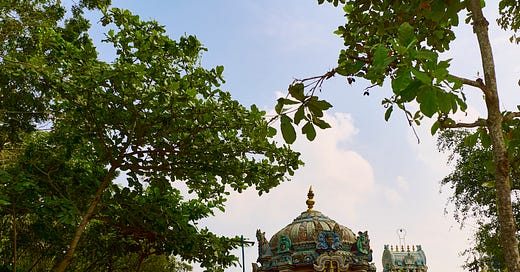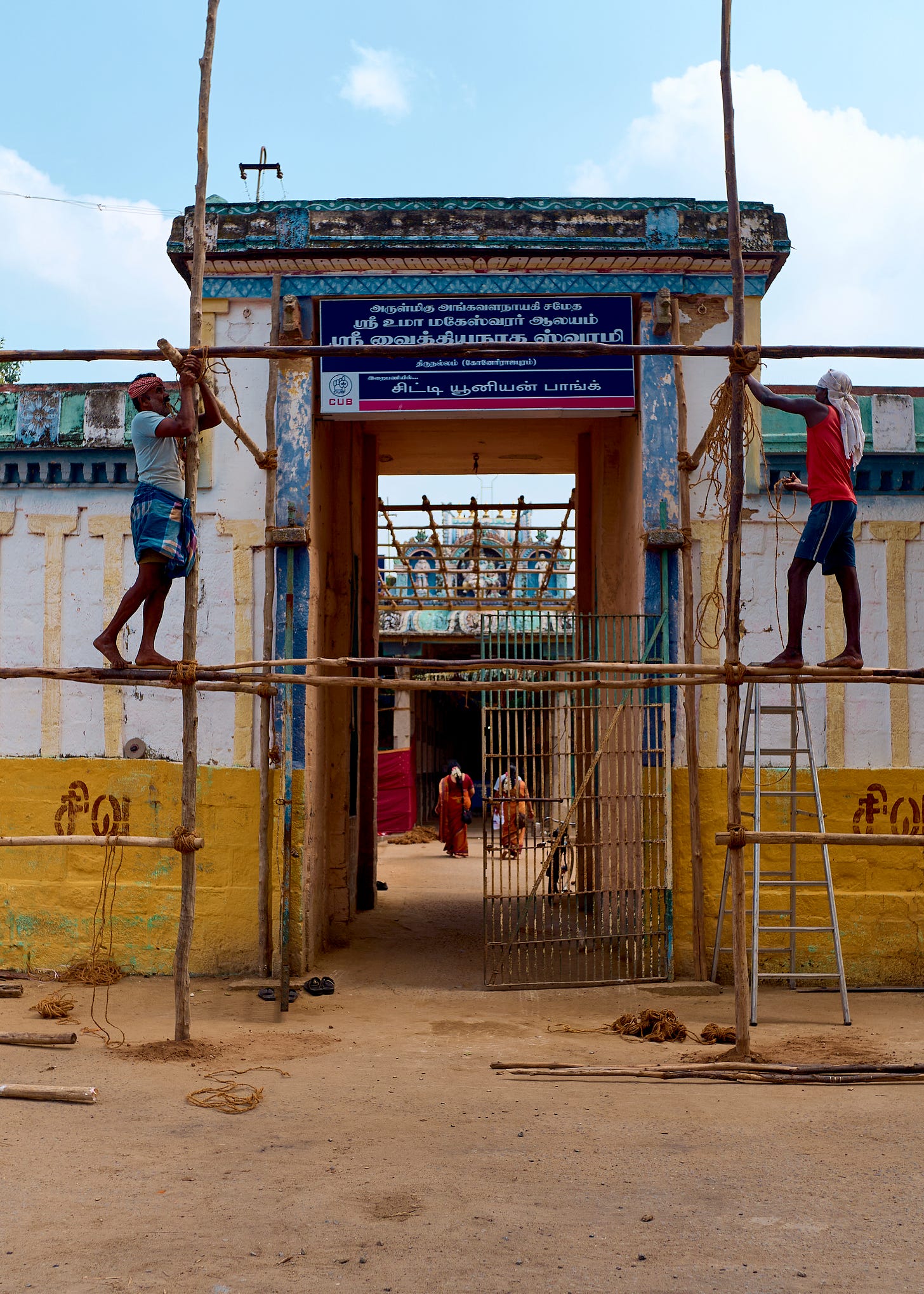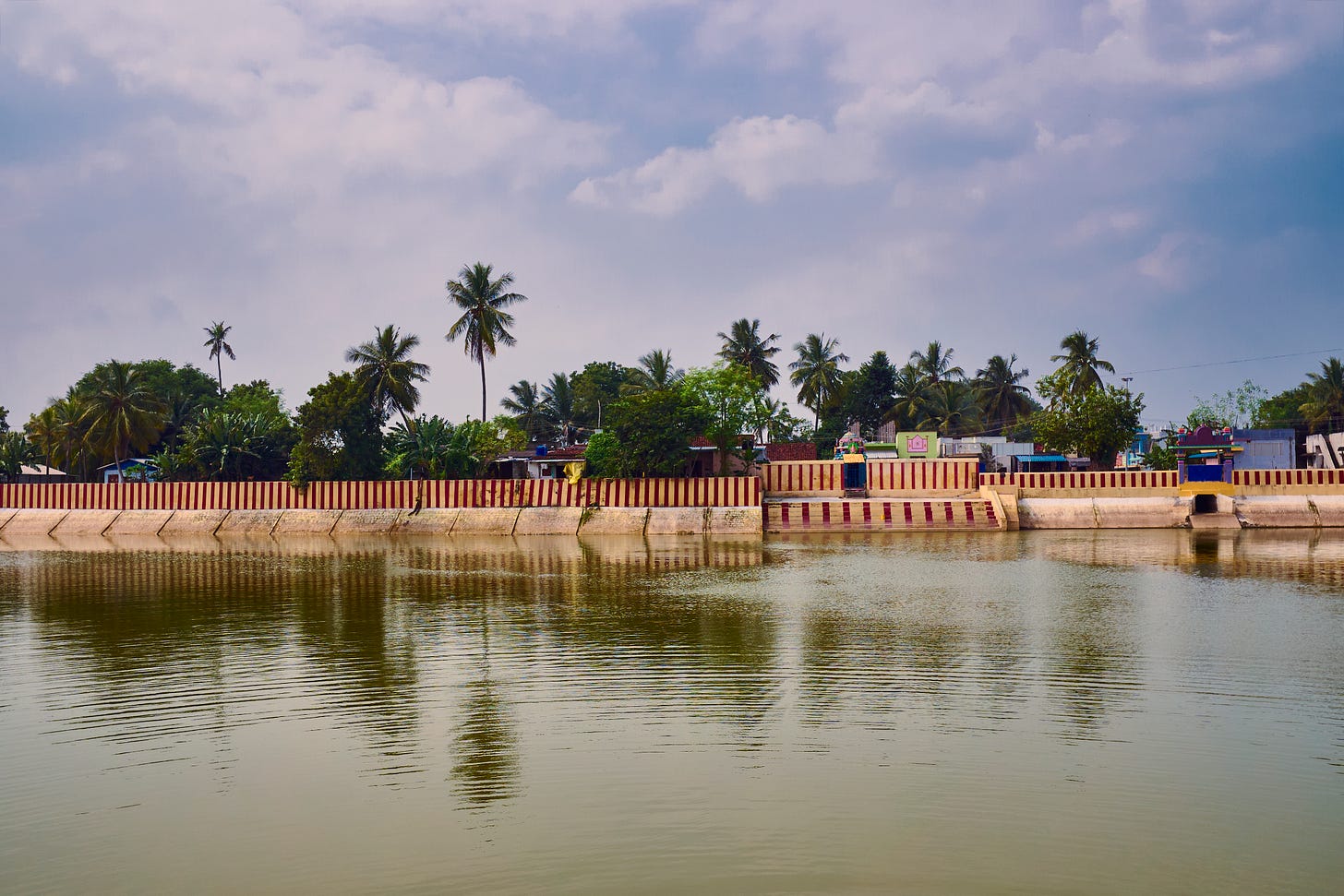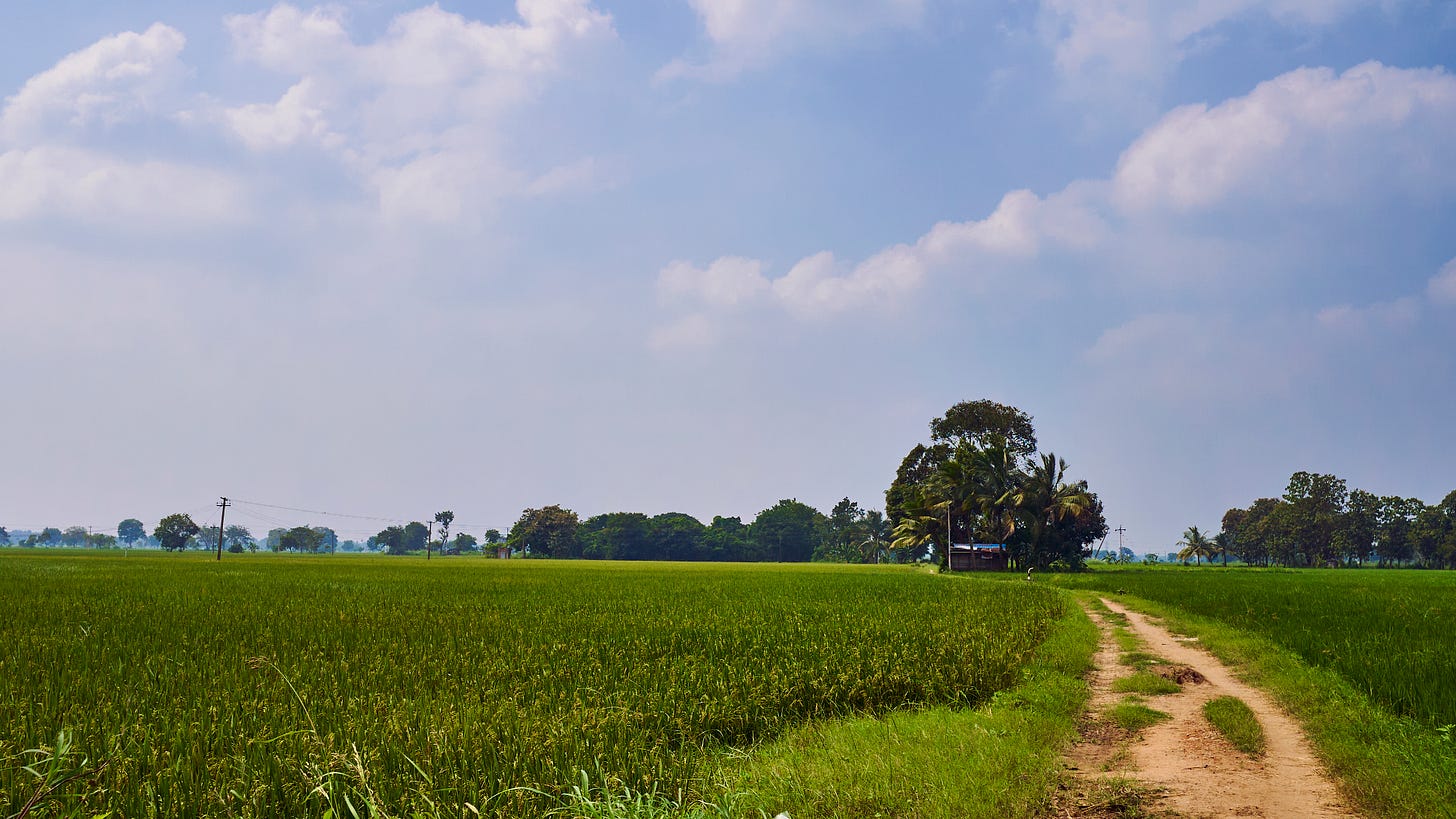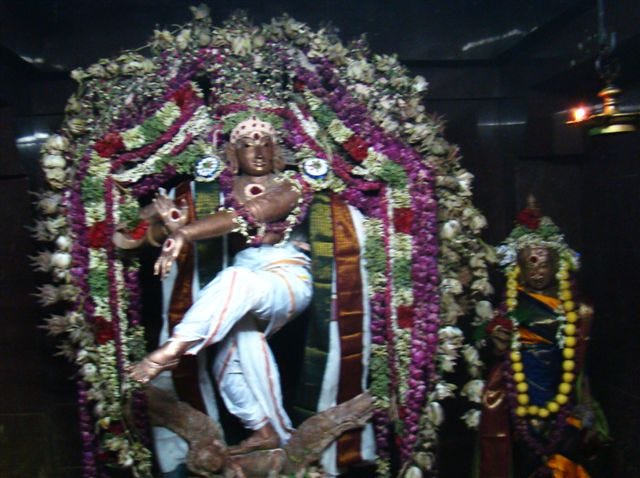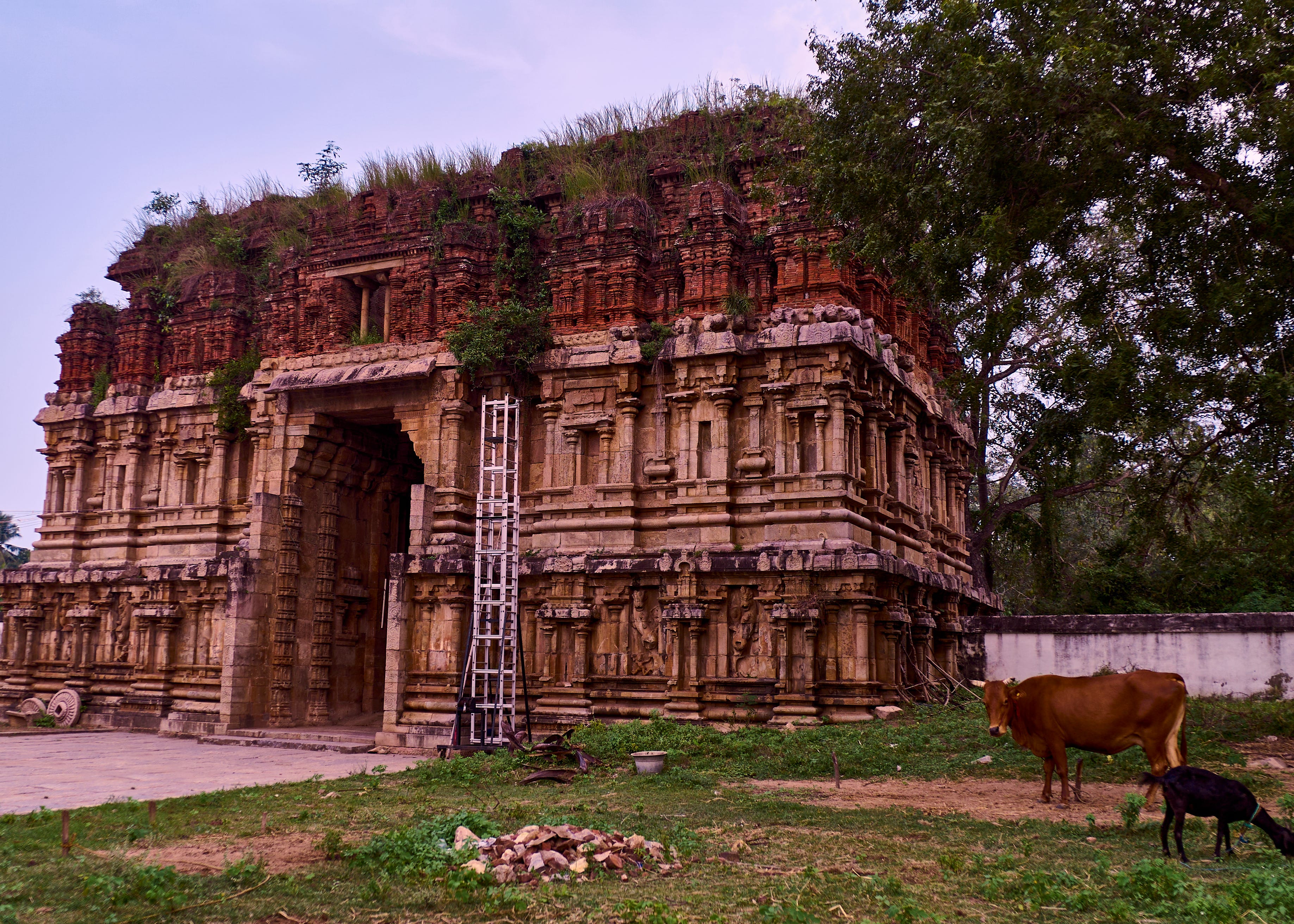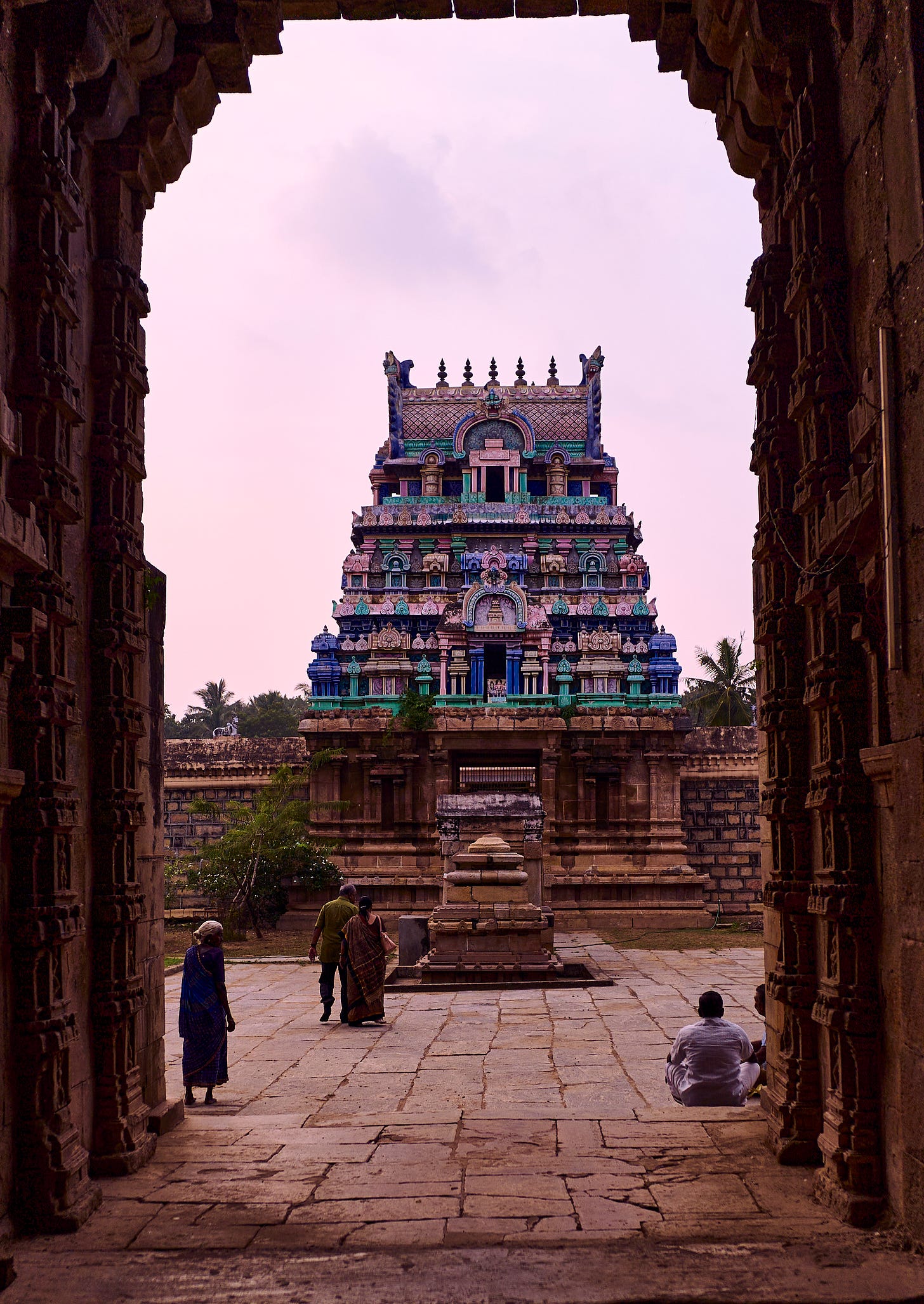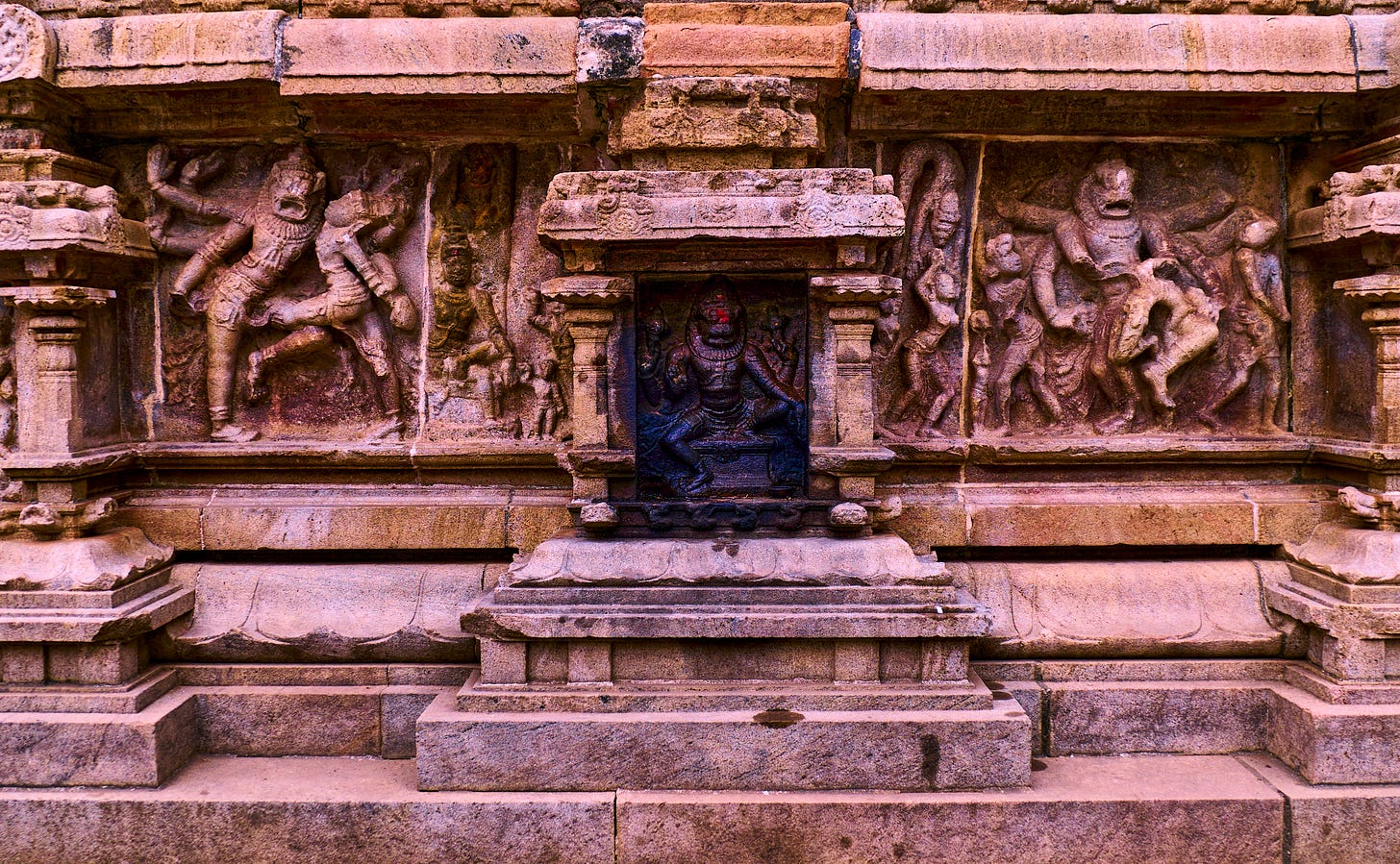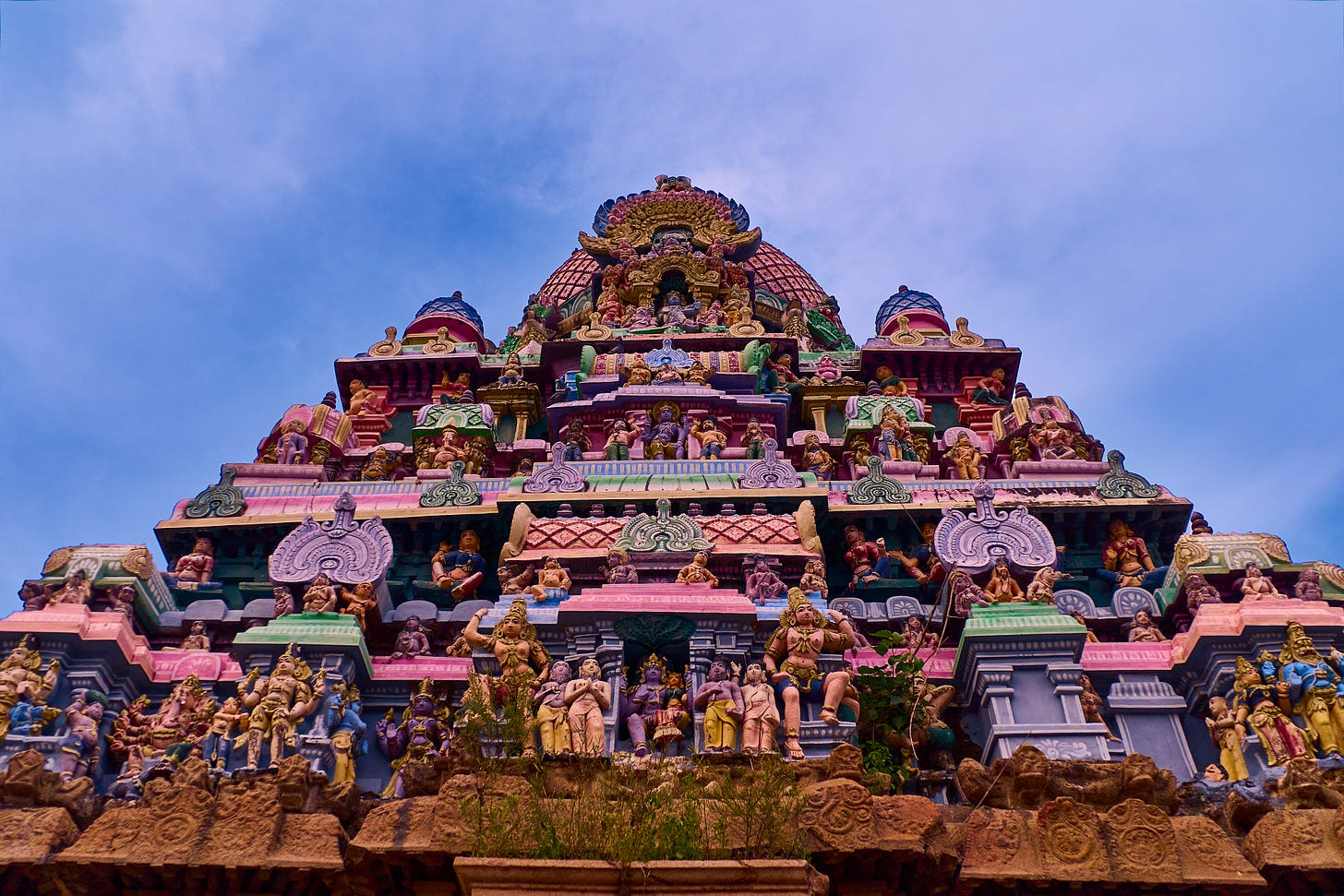Exploring the Rich Heritage of Koneri Rajapuram and Pazhayårai Temples
A Photo Essay from Kumbakonam
As we wrapped up our journey in Kumbakonam, our last day was filled with excitement as we set off early in the morning to explore two remarkable temples: Konerirajapuram and Pazhayarai. Each temple holds a unique place in Tamil Nadu's cultural and spiritual landscape, showcasing the architectural brilliance and historical significance of the Chola dynasty.
Konerirajapuram: A Glimpse into Chola History
Our first stop was the Uma Maheswarar Temple at Konerirajapuram, a site steeped in history. This temple is believed to have been constructed in the 10th century by Sembiyan Mahadevi, the grand aunt of Raja Raja Chola I, making it one of the few temples built by a woman in Chola royalty.
As we arrived, we were greeted by the sight of lush paddy fields, setting a serene backdrop for our visit.The temple features a stunning pond opposite its entrance, and on this day, preparations were underway for an upcoming festival.
One of the most significant aspects of this temple is its Nataraja bronze, reputed to be the largest of its kind. The poojari, a skilled storyteller, shared captivating legends about this idol made from panchaloka alloys—a blend of gold, silver, copper, iron, and zinc. According to lore, Lord Shiva consumed this metal concoction and transformed into a living idol before the sculptor's eyes. The intricate details of the Nataraja statue left us in awe, although photography was restricted within the sanctum.
The temple's walls are adorned with beautiful paintings and miniature sculptures, though it was evident that some areas were in need of restoration. I managed to capture a few images of the paintings on my phone.
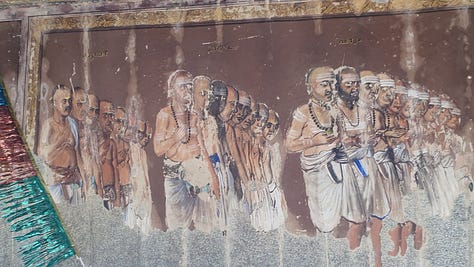
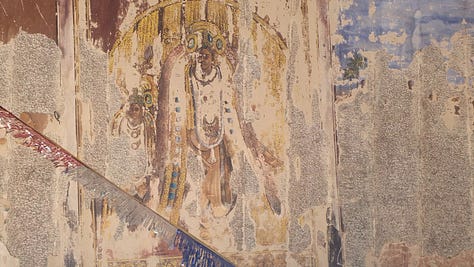
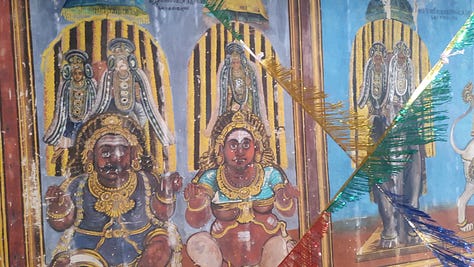
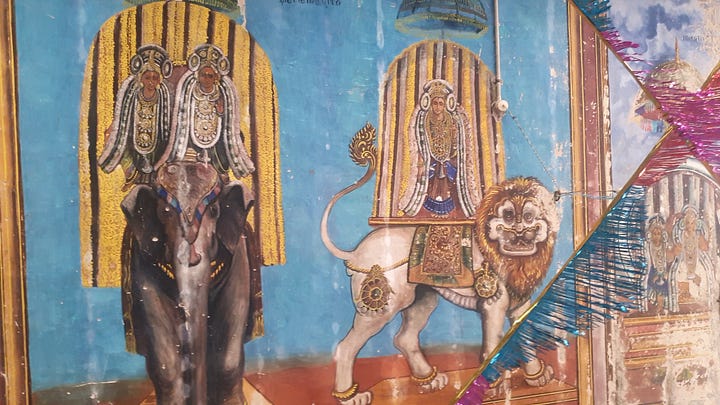
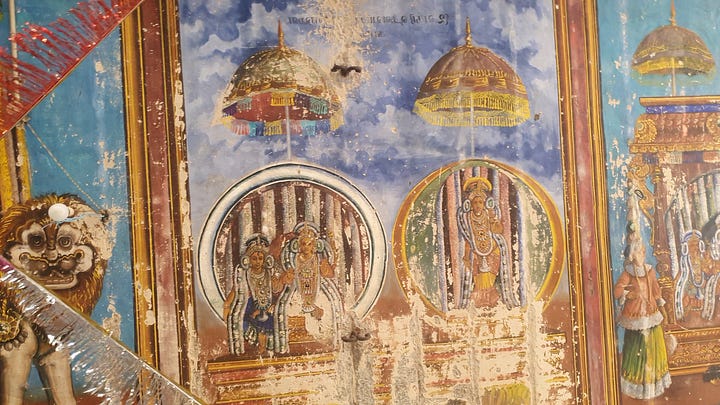
Pazhayårai: The Mythical Capital
Next, we ventured towards Pazhayarai, known as Ayiratalli or "the land of a thousand temples." Our journey took us on a bit of a detour thanks to Google Maps, but we eventually arrived at the Pazhayarai Somanathaswami Temple. Surprisingly, we encountered cattle roaming freely in the courtyard—a reminder of the temple's rural setting.
This temple boasts a rich history dating back to the 7th century during the Chola dynasty and contains inscriptions detailing donations made by Kundavai Nachiyar, sister to Raja Raja Chola I.
Upon approaching the temple, we were enveloped by the resonant chants of "Om Namachivaya," creating an atmosphere charged with spirituality.
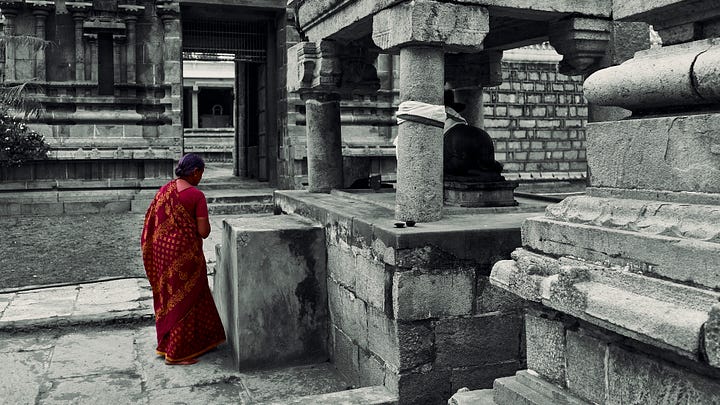
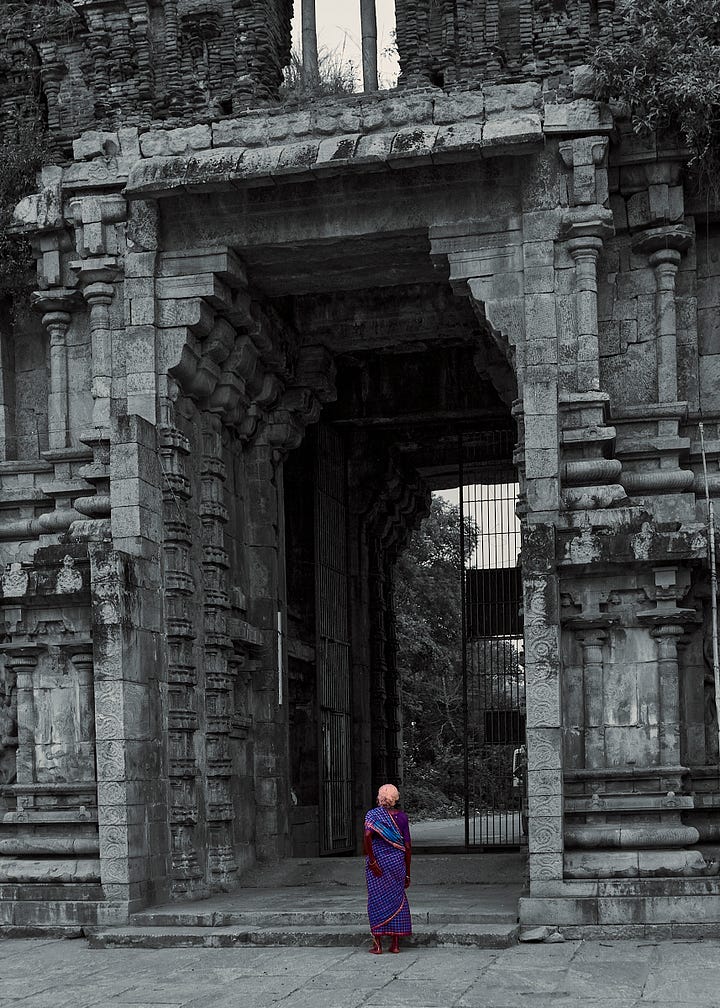
Hidden behind its walls was an expansive temple complex that echoed centuries of devotion.This temple is also mentioned in the Tevaram, hymns composed by Tamil saints like Appar and Thirugnana Sampanthar, further highlighting its significance.
My interest in visiting this site was piqued after watching Ponniyin Selvan, and stepping into this historical space felt like fulfilling a personal wish.
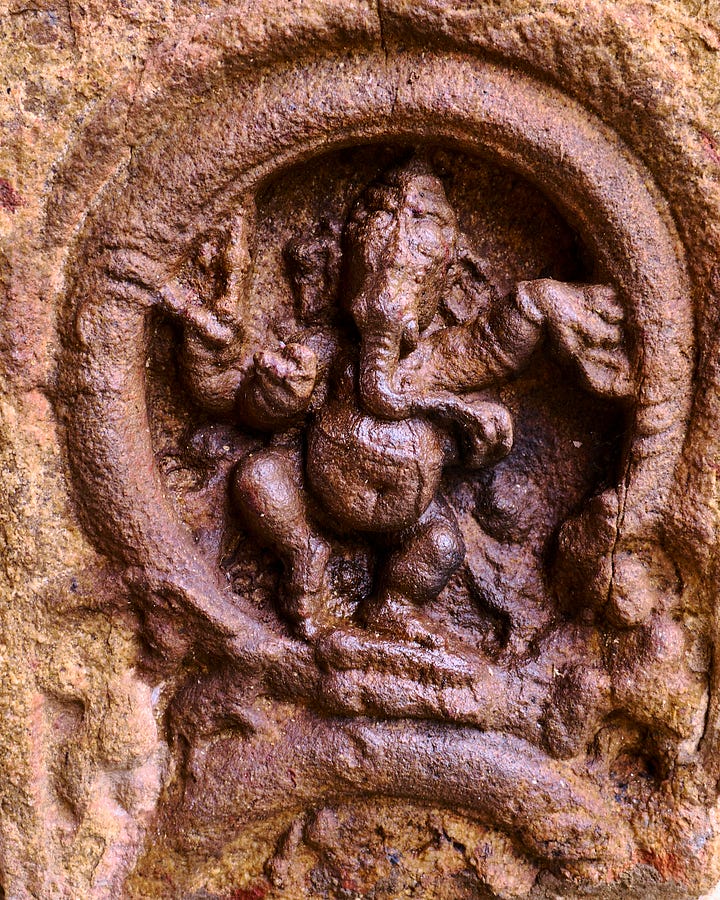
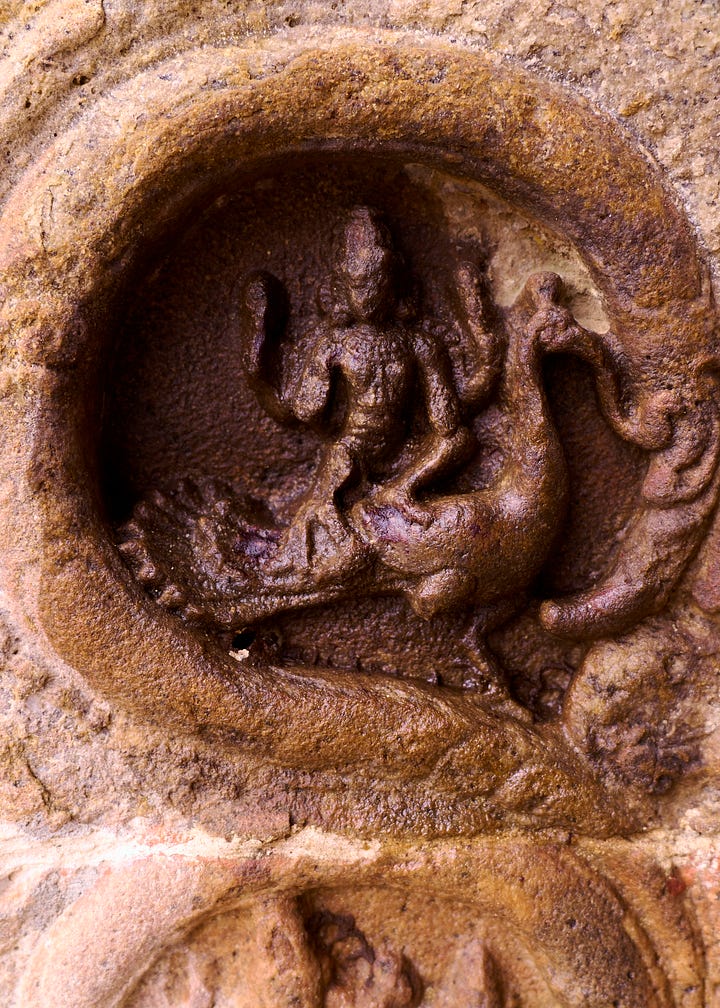
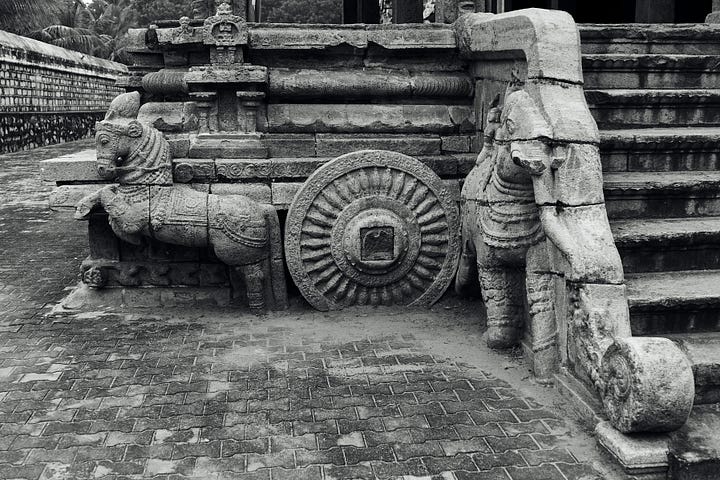
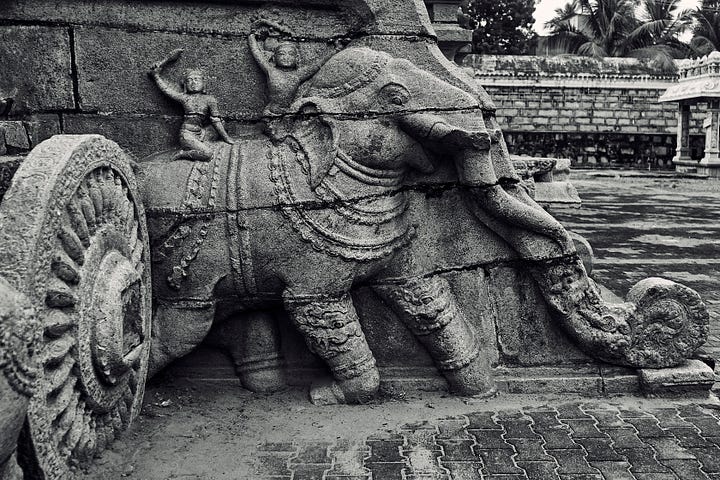
The architectural beauty of Somanathaswami Temple is remarkable, showcasing intricate carvings and inscriptions that reflect the artistic prowess of its creators during the Chola period.
A Testament to Cultural Heritage
Both Konerirajapuram and Pazhayarai serve as enduring testaments to Tamil Nadu's rich cultural heritage and the legacy of the Chola dynasty. While our time was limited—preventing us from exploring more temples in this historically rich region—we cherished every moment spent at these sacred sites.
As we concluded our visits in Kumbakonam, I felt grateful for the opportunity to connect with such profound history and spirituality. Each temple not only tells stories from centuries past but also continues to inspire devotion among countless visitors today.


